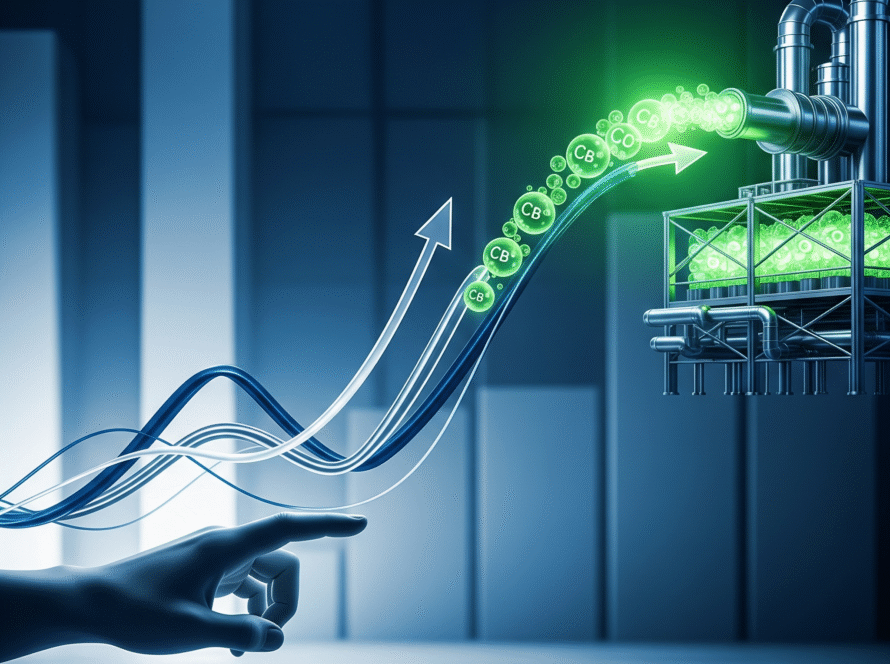A new era of lithium extraction is emerging, one driven by nanotechnology, guided by artificial intelligence, and grounded in sustainability.
As global demand for lithium surges, the world’s battery supply chain faces mounting pressure. From electric vehicles to renewable grid storage, lithium is the lifeblood of clean energy. Yet, traditional mining methods remain water-intensive, costly, and environmentally taxing. Now, two transformative technologies, nanotech and AI, are reshaping how this critical resource is sourced and refined.
The Rise of Nanotechnology in Lithium Extraction
In the rapidly evolving world of energy storage, nanotechnology is redefining what’s possible. Featured in a recent MSN report, new nanoscale membranes are being developed to extract lithium more efficiently from brine sources.
These selective nanomaterials act like precision filters, targeting lithium ions while rejecting impurities. The result is faster, cleaner extraction with dramatically reduced water use and waste.
Industry observers note that traditional lithium mining, often concentrated in South America’s salt flats, consumes vast quantities of water, up to 500,000 gallons per ton of lithium, and devastates local ecosystems. The new approach could help reverse that damage by recycling water in closed-loop systems and minimizing surface disruption.
“This innovation could cut lithium production costs by up to 30%,” noted experts in the MSN feature. “It’s a breakthrough that could make sustainable battery manufacturing both practical and profitable.”
For executives in the EV and renewable energy sectors, the implications are enormous. Lower production costs mean more affordable electric vehicles, larger-scale battery storage, and a steadier global supply chain.
Environmental Trade-offs and Industry Implications
The path to sustainable extraction is not without challenges. As reported by Euronews, lithium mining has left deep environmental scars in Bolivia and Argentina, where evaporation ponds drain local water tables and displace indigenous communities.
While nanotechnology offers hope for change, environmental scientists stress that scaling these solutions responsibly will be key. Each new process must undergo rigorous testing to ensure it doesn’t introduce new pollutants or unforeseen ecological risks.
Still, the economic case remains strong. By making lithium extraction cleaner and more efficient, nanotech could reduce operating costs, improve ESG scores, and accelerate compliance with tightening global sustainability mandates.
Battery leaders like Tesla and Panasonic are already monitoring this space closely, recognizing that the same materials science revolution that reshaped semiconductors could now transform the battery industry.
AI’s Role in Accelerating Battery Innovations
If nanotechnology is revolutionizing extraction, artificial intelligence is transforming discovery.
According to a TechTimes report (January 2024), AI algorithms have identified a new compound that cuts lithium use by half, while maintaining energy density. Though still under review, the discovery could reshape global supply and dramatically ease mining pressures.
AI’s contribution extends beyond chemistry. By processing millions of data points on molecular behavior, temperature resistance, and voltage stability, AI tools can predict performance outcomes before physical testing even begins. This means faster R&D cycles and lower development costs for battery makers.
A New York Times analysis adds that U.S. projects are already combining AI with direct lithium extraction (DLE) from geothermal brines, an approach that nanotechnology could amplify for greater yield and purity.
Together, nanotech and AI are forming a dual engine for progress: one refines what we take from the Earth, the other reimagines how we use it.
Future Prospects and Global Supply Challenges
The fusion of nanotech, AI, and materials science could extend battery lifespans and make energy storage truly circular. MINING.COM reported in 2023 that researchers are integrating 2D materials and sound-wave technologies to produce batteries lasting up to nine years, potentially enhanced by nanostructured lithium interfaces.
Meanwhile, International Battery Metals forecasts a threefold increase in lithium demand by 2030, driven by the exponential rise of electric vehicles and renewable grid systems. Meeting that demand sustainably will require more than just technological progress; it will demand ethical sourcing, transparent partnerships, and long-term investment in innovation.
Geopolitical tensions over lithium-rich territories remain a concern, with much of the world’s supply concentrated in politically volatile regions. The MSN report emphasizes that technological progress must go hand in hand with ethical mining practices to prevent repeating the mistakes of traditional extractive industries.
As one industry analyst summarized, “Nanotech may solve the technical problem of extraction, but only ethics and policy can solve the human one.”
The Executive Takeaway: A Smarter, Cleaner Lithium Economy
For business leaders, investors, and policymakers, this convergence of nanotech and AI signals a strategic inflection point.
- Innovation advantage: Companies that adopt these technologies early will lead in sustainable battery production.
- Cost efficiency: Smart extraction and AI-driven material discovery can reduce both capital and operational expenses.
- Sustainability leadership: Aligns perfectly with global ESG standards and net-zero goals.
- Risk mitigation: Diversified battery chemistries could insulate supply chains from geopolitical shocks.
The road to cleaner energy will be paved not only with ambition but with intelligent engineering and ethical foresight.As technology continues to evolve, nanotech and AI together could turn lithium extraction from a high-impact necessity into a low-impact innovation, one that fuels both progress and responsibility in equal measure.



